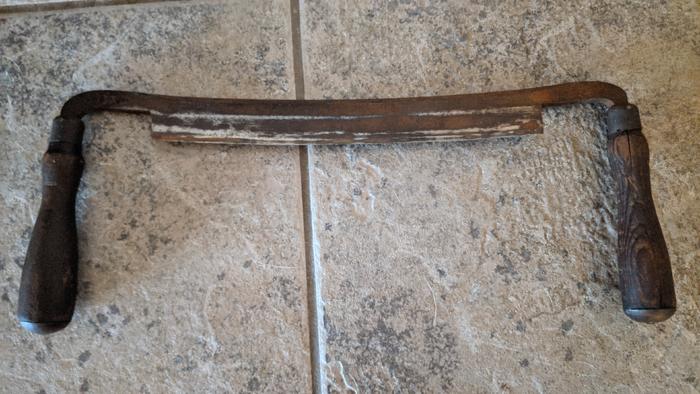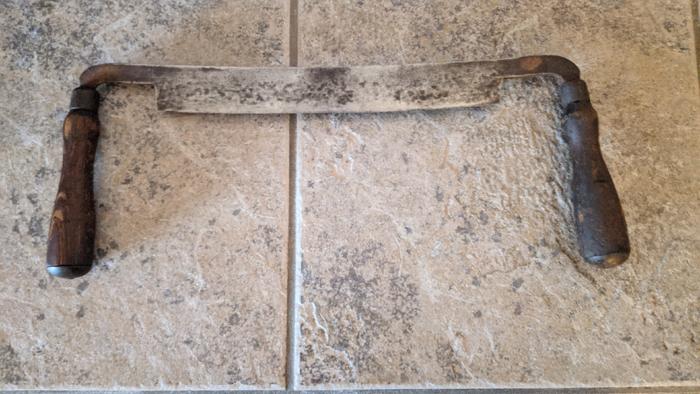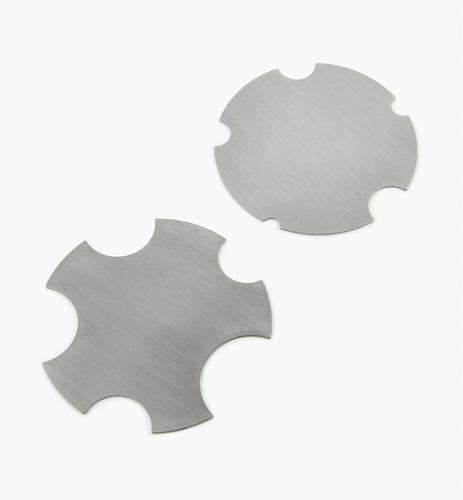Results 1 to 7 of 7
 16Likes
16Likes
Thread: Before Sandpaper
-
01-27-2021, 12:10 AM #1Senior Member

- Join Date
- Jul 2020
- Posts
- 270
Thanked: 44 Before Sandpaper
Before Sandpaper
Been doing some scale work recently, it just got me wondering about how scales were finished before sandpaper was around. I know about using scrapers and files such, but you still end up with marks you need to remove if you want a nice smooth finish. I know in woodworking you have abrasives such as rottenstone and pumice, I wonder if they used something similar? Anyone who can chime in with knowledge about the historic ways of scale making?
-
01-27-2021, 01:27 AM #2Senior Member



- Join Date
- Apr 2012
- Location
- Diamond Bar, CA
- Posts
- 6,553
Thanked: 3215
Have you tried scraping? Not kidding.
You can get a better finish than sandpaper with a sharp scraper. And they are easy to make and sharpen. A concave scraper would produce repeatable results quickly.
If you could grind steel, horn could easily be ground to rough shape or hand scraped in a few minutes.
I make them from cheese knives from thrift stores, (already have handles) putty knives or old cheap carbon steel knives.
-
01-27-2021, 04:35 AM #3

A draw knife can do incredibly intricate work.


You wouldn't believe how smooth you can make a hard wood or ,I imagine bone or horn, I've never used it on either but I would think so.
Going back maybe further than razors things like horsetail and certain rushes were used as was cloth or skins with oil or hide glue and an abrasive like ash or sand.Iron by iron is sharpened, And a man sharpens the face of his friend. PR 27:17
-
01-27-2021, 05:30 AM #4Senior Member

- Join Date
- Jul 2020
- Posts
- 270
Thanked: 44
I do use a scraper after I do my rough file work but I find I still get lines going down the work that don't come out unless I hit the scales with some abrasive paper before finishing. On old horn scales that I've looked at I don't tend to see any obvious evidence of scraping so I guess they had some extra step afterwards but I haven't really found out how scales were made. I did stumble upon a paper about the knife handle industry in Sheffield and the materials used but it didn't go too much into the equipment and processes used. And again some of the ivory scales look well polished so I wonder what they did after scraping?
-
01-27-2021, 08:16 AM #5At this point in time...




- Join Date
- Jun 2007
- Location
- North Idaho Redoubt
- Posts
- 27,092
- Blog Entries
- 1
Thanked: 13249
They used Leather covered wheels and fats to stick metal powder to them for polishing, much the same way they polished the steel itself
If you search out the term Black Polish you should find info, might have to follow links from the term Crocus Polish too"No amount of money spent on a Stone can ever replace the value of the time it takes learning to use it properly"
Very Respectfully - Glen
Proprietor - GemStar Custom Razors Honing/Restores/Regrinds Website
-
01-27-2021, 05:32 PM #6Senior Member



- Join Date
- Apr 2012
- Location
- Diamond Bar, CA
- Posts
- 6,553
Thanked: 3215
While “sandpaper” has been in use since the 1300’s and modern sandpaper the early 1900’s. Most antique furniture was handplaned and scraped. Hand work is surprisingly efficient and capable of a smoother, better finish than sanding.
I suspect pre-1900’s production razor scales were done by hand with rasps, files grinding wheels and scrapers, finished on the same type of wheels used on steel.
If a scraper is custom ground concave, they would easily produce a smooth reproducible convex finish on horn, bone and ivory, then finished on buffers.
In the last few years, for woodworking there has been a resurgence of hand tools with many new custom boutique makers of hand saws, planes, chisels, files, and rasps. For non-production work, hand tools can be faster and capable of a better finish than most machines. Added benefits are the lack of screaming machines and no airborne dust.
Take a look at Bearkat Wood for a quality scraper with curved edges that would work well for scale profiling or grind your own. You can buy a scraper for as little as $5 or grind a putty knife.
-
01-27-2021, 07:02 PM #7Senior Member


- Join Date
- Feb 2018
- Location
- Manotick, Ontario, Canada
- Posts
- 2,813
Thanked: 563
Lee Valley has a set as well. $18.50 CDN
 David
David
“Shared sorrow is lessened, shared joy is increased”
― Spider Robinson, Callahan's Crosstime Saloon



 LinkBack URL
LinkBack URL About LinkBacks
About LinkBacks






 Reply With Quote
Reply With Quote